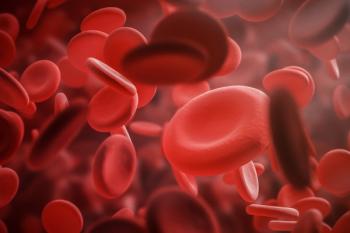
New resource available for pediatric hospice workers
Hospice Pharmacia (HP), a division of excelleRx, Philadelphia, recently released its Pediatric Medication Use Guidelines (P-MUGs) to the company's 400 partnering hospices around the country. The new tool will provide medication protocols that will aid healthcare workers in the management of end-of-life symptoms for terminally ill children. Up to now, the firm used guidelines designed to manage pain and palliate symptoms in adults.
Hospice Pharmacia (HP), a division of excelleRx, Philadelphia, recently released its Pediatric Medication Use Guidelines (P-MUGs) to the company's 400 partnering hospices around the country. The new tool will provide medication protocols that will aid healthcare workers in the management of end-of-life symptoms for terminally ill children. Up to now, the firm used guidelines designed to manage pain and palliate symptoms in adults.
"It became obvious that our adult-oriented Medication Use Guidelines [MUGs] did not adapt well to our current pediatric population," said Douglas J. Weschules, Pharm.D., BCPS, director of clinical services at excelleRx. "While the symptoms addressed in both the adult and pediatric MUGs are largely the same, there were many important differences in pharmacotherapy that needed to be emphasized."
The protocols come as part of HP's Pediatric Pharmaceutical CareTool Kit-which also contains general information on pediatric pharmacotherapy principles-and are organized by either symptom or disease state, listing the most common agents used to treat the disorder with pediatric-specific dosing. For instance, nausea and vomiting are addressed in one section and list milligram-per-kilogram dosing for metoclopramide, prochlorperazine, promethazine, haloperidol, chlorpromazine, trimethobenzamide, diphenhydramine, hydroxyzine, dexamethasone, and lorazepam. Additionally, each drug listed has a "clinical notes" section alerting practitioners to contraindications, adverse reactions, potential drug interactions, and proper administration.
"Everybody who has access to the P-MUGs will benefit from reviewing the pediatric principles of drug therapy," Weschules said. "This section highlights important issues such as the major differences in age, routes of administration, drug distribution, metabolism, and excretion."
Darlene Hernandez-Torres, Pharm.D., clinical pharmacy specialist in palliative care and pain management at Florida Hospital in Orlando, has found that because fewer drugs have been proven effective in children, dosing guidelines may not exist in some cases. "Often there are no references available for some of the drugs we commonly use in the adult palliative care arena and even less so for the pediatric patients," she said. "Having medication guidelines for managing pain and other distressing symptoms in children will be extremely helpful in improving their quality of life."
The availability of an appropriate formulation is also important, noted Hernandez-Torres, especially for the youngest patients. "Some drugs need to be extemporaneously compounded into a usable dosage form to be used in young children." Weschules agreed that one of the biggest concerns shared by all pediatric clinicians is the palatability of medications. "It is next to impossible to make an opioid oral solution taste good," he admitted. But, he said, "we have included a section in the guidelines regarding this issue and outline some of the limits we face with flavoring medications, with some suggestions for sour, salty, and bitter-tasting drugs."
According to Weschules, most of the HP partners are hospices that do not have a pediatric-specific practice. "Part of what we are trying to achieve with the P-MUGs is to provide some pharmacotherapy guidance to those programs that do not frequently enroll children into their hospice. We hope this tool will fill a void and provide a level of comfort to clinicians who do not work with pediatric patients on a daily basis."
Information in the new guidelines was derived from evidence-based literature and standards of practice, according to HP. Where literature is lacking, recommendations are based on clinical experience, anecdotal case reporting, and prescribing trends. If a therapy is not listed in the P-MUGs, it may be due to a lack of data or safe dosing information in this population.
Newsletter
Pharmacy practice is always changing. Stay ahead of the curve with the Drug Topics newsletter and get the latest drug information, industry trends, and patient care tips.





























































































































